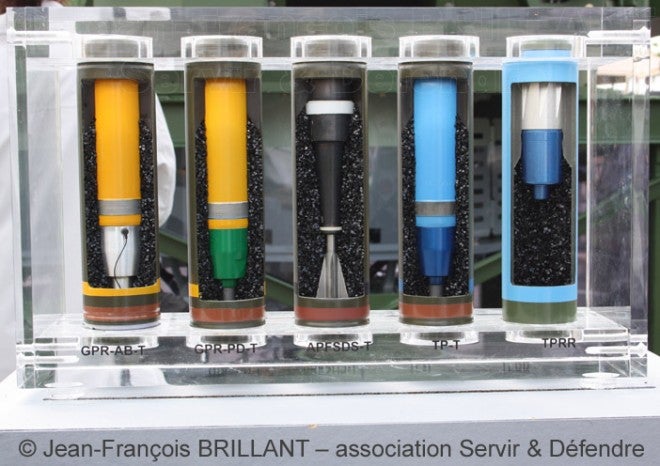The UK has become the first nation to embrace “cased telescoped” ammunition technology*, having announced an order for 515 40mm CTA guns to retrofit the Warrior IFV and arm the new ASCOD-derived Scout SV vehicle, which will replace the long-serving CVR(T) family, including the Scimitar. IHS Janes reports:
The UK Ministry of Defence has placed a GBP150 million (USD236 million) order for CTA International 40 mm Case Telescoped Armament System (CTAS) cannons for its future fleet of tracked armoured fighting vehicles.
The contract, awarded to CTA International (CTAI), includes 515 cannons for the British Army’s new Scout SV reconnaissance vehicle and its upgraded Warrior infantry fighting vehicles.
Speaking on 1 July, UK defence secretary Michael Fallon said: “Today I can announce we have signed a GBP150 million contract to fit the Scout with a new Cased Telescope cannon providing it with unrivalled firepower and a new ‘airburst ammunition’ capability.”
The CTAS features a novel telescoped ammunition that means the cannon and its ammunition takes up a significantly reduced internal volume within a vehicle’s turret. This in turn allows a larger calibre cannon to be fitted to smaller vehicles, and for more ammunition to be carried.
The order for the cannons is evenly divided between the two vehicles, with 245 cannons destined for the turreted versions of the Scout SV and the Warrior CSP vehicles. Speaking to IHS Jane’s , an Ministry of Defence spokesperson stated that the remaining 25 cannons would be used for “ammunition qualification, trials, and training”.
CTAI is a joint venture between BAE Systems and Nexter Systems, with the CTAS also set to be installed on the French Army’s new suit of armoured vehicles, such as the EBRC Jaguar.
The UK has a total of 589 Scout SVs on order from prime contractor General Dynamics UK, with the vehicle based on the ASCOD 2 design. Of these 245 are of the turreted version, in three different variants; with the remaining vehicles being of the Protected Mobility Reconnaissance Support (PMRS) version, divided between six variants. Under the Warrior Capability Sustainment Programme (CSP), the British Army is also upgrading 380 vehicles from the Warrior family. Of these, 245 will be of the infantry fighting vehicle variant – fitted with the CT 40 mm cannon in a new Lockheed Martin UK turret – with the remainder being engineering support and artillery support vehicles that will not be armed with the new cannon.
According to BAE Systems, production of the cannons for the British Army will last for “seven years, with the first cannons scheduled for delivery in mid-2016”.
Cased telescoped ammunition is also being eyed by the US for future small arms applications as well as for AFVs, making the UK’s adoption of the 40mm CTA a very significant milestone on the road to fielding practical lightweight, compact cased ammunition.
Like the LSAT rounds discussed in a previous article on cased telescoped ammunition, the 40mm CTA is not totally telescoped, and has all of its propellant behind the projectile’s driving band. It does, however, retain the compact form factor and light weight of the telescoped ammunition concept.
*The UK adoption is not without precedents, however, as both the 7.62x38R Nagant and 23×260 Rikhter were adopted by Russia previously. The point at which a given cartridge design is considered or not to be telescoped is undefined, but those two rounds are not generally included in the modern group of cased telescoped rounds.
 Your Privacy Choices
Your Privacy Choices

